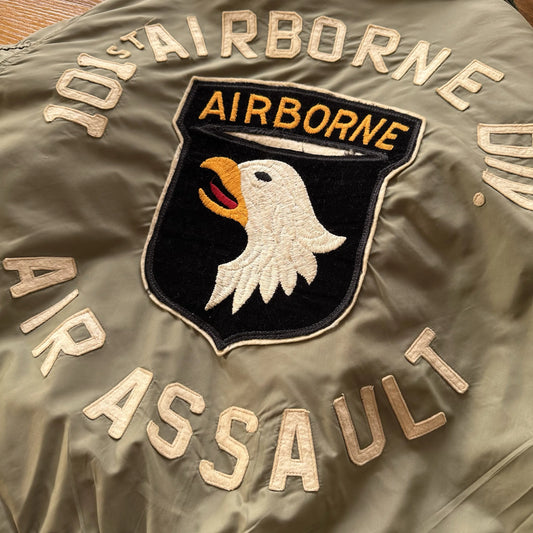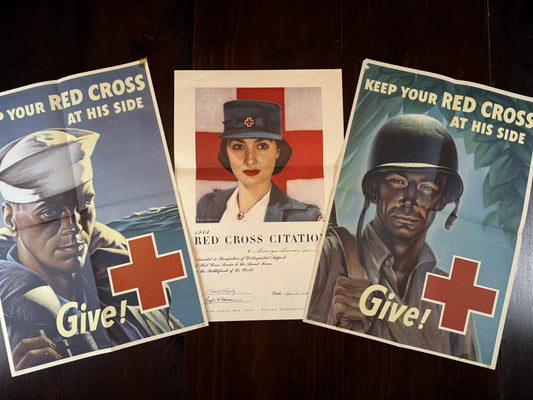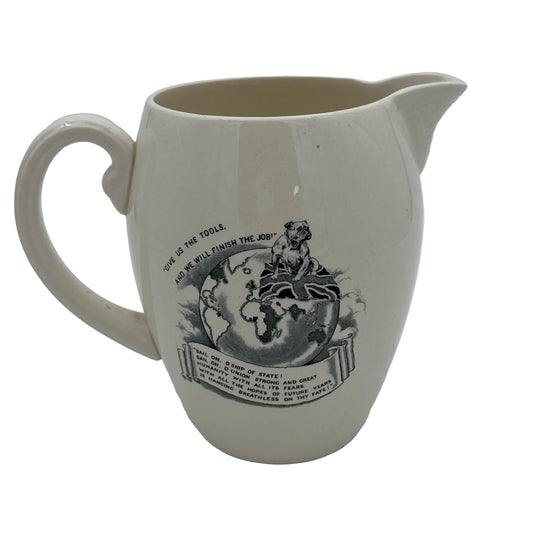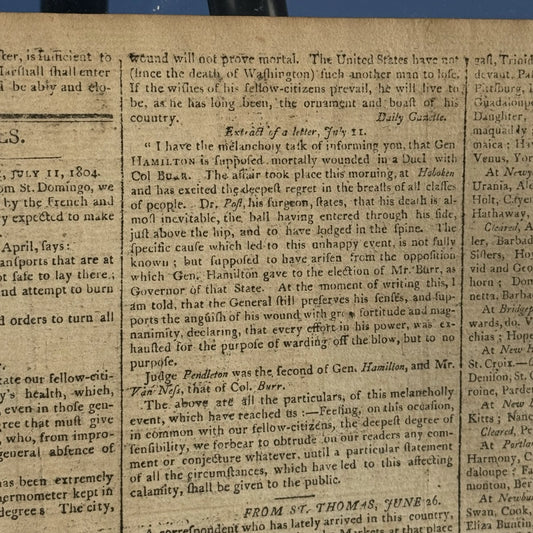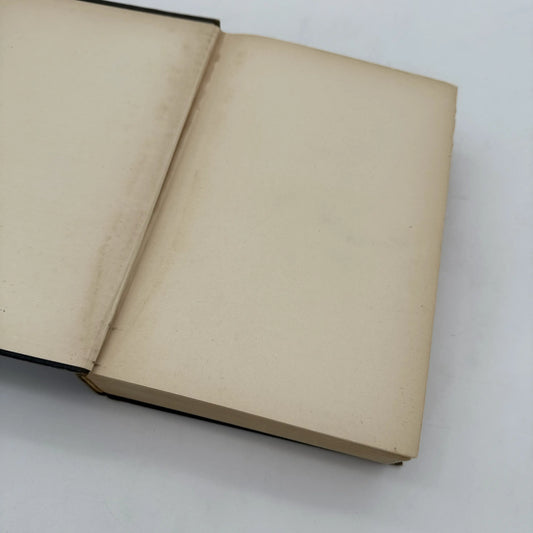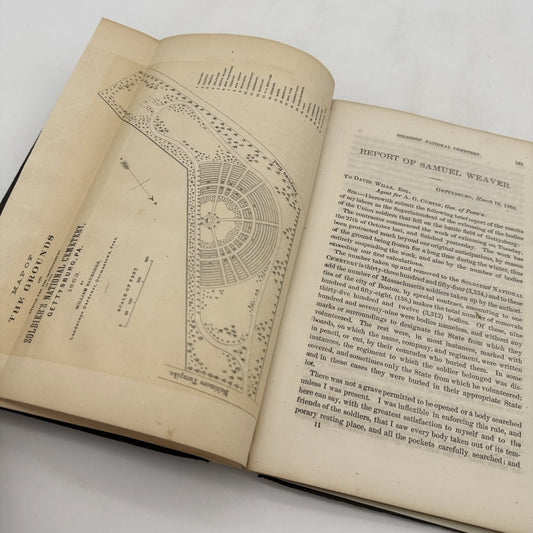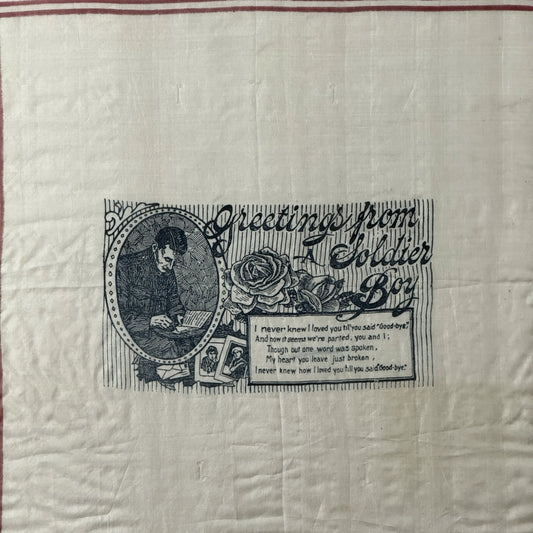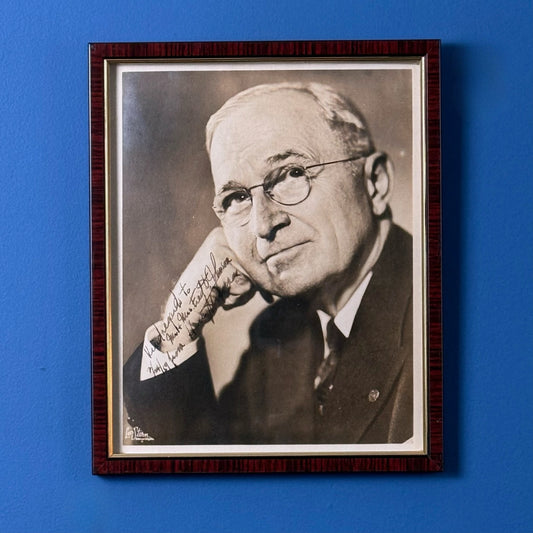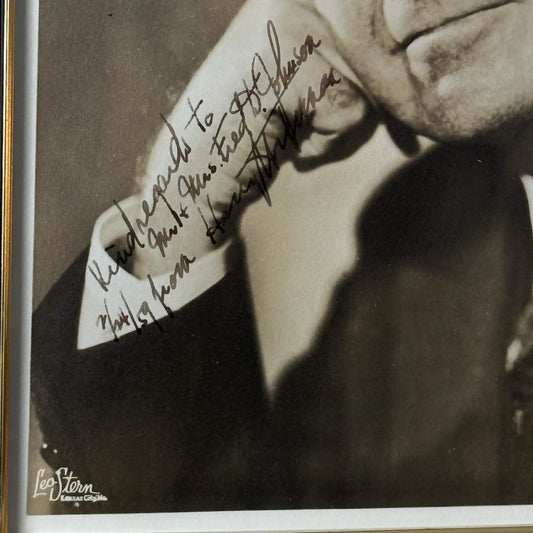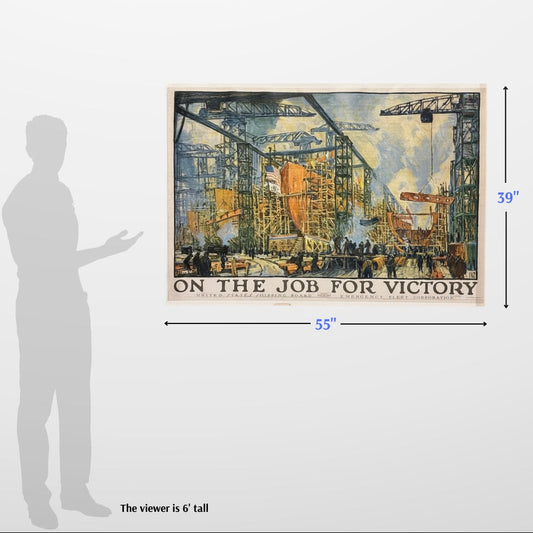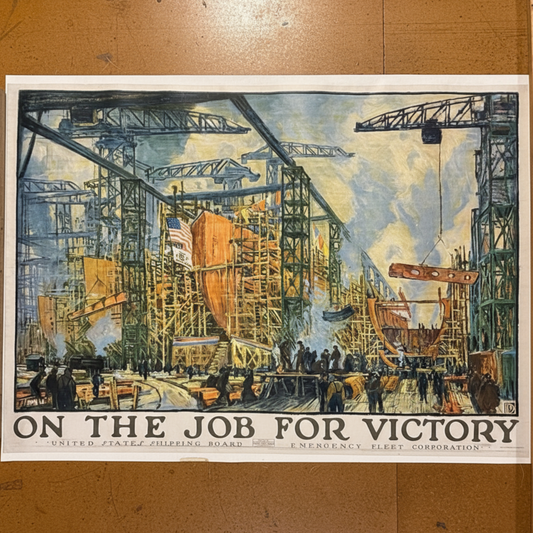"U.S. Army in Action" Prints — From the Revolutionary War to the Korean War
"U.S. Army in Action" Prints — From the Revolutionary War to the Korean War
Updated at 9 pm on May 24: All prints have been sold.
A series of prints with images depicting the U.S. Army in Action from the Revolution to Korea. Each contains a detailed description of the event portrayed.
Published in Washington, D.C. by the U.S. Government Printing Office in 1954.
Some have minor wear around edges, which will be covered if you mat and frame your pint.
Prints in this series:
-
SOLD — Remagen bridgehead — 7 March 1945 — Note: There is a tear along the bottom that extends into the area with the text, but not the image, that has been repaired. The lower price reflects this.
"Here, on the Ludendorf Bridge crossing the Rhine at Remagen, Combat Command B, 9th Armored Division - headed by the 27th Armored Infantry Battalion - with "superb skill, daring, and esprit de corps" successfully effected the first bridgehead across Germany's formidable river barrier and so contributed decisively to the defeat of the enemy. The 27th Battalion reached Remagen, found the bridge intact but mined for demolition. Although its destruction was imminent, without hesitation and in face of heavy fire the infantrymen rushed across the structure, and with energy and skill seized the surrounding high ground. The entire episode illustrates that high degree of initiative, leadership, and gallantry toward which all armies strive but too rarely attain, and won for the Combat Command the Distinguished Unit Citation."
- SOLD — Merry Christmas, 1776 — "Trenton, N. J., 26 December 1776. General Washington here matched surprise and endurance against the superior numbers and training of the British, and the Continental Army won its first victory in long months of painful striving. Trenton eliminated 1,000 Hessians and drove the British from their salient in New Jersey. It saved the flagging American cause and put new heart into Washinton's men. Alexander Hamilton's Company of New York Artillery (now D Battery, 5th Field Artillery) opened the fight at dawn, blasting the bewildered Hessians as they tried to form ranks in the streets."
- SOLD — The road to Fallen Timbers — Banks of the Maumee, Ohio, August 1794. Anthony Wayne commanded the Army, enlarged in 1792 and formed into the Legion (now 1st and 3d Infantry Regiments). He trained it into a tough combat team to beat the Indians of the Northwest who had twice whipped us. The Legion advanced into Indian country, feeling its way cautiously. On 20 August 1794 it tracked down the foe, routed him from behind a vast windfall, and destroyed his warriors. Thus the way cleared for the new nation to expand into the Ohio Valley."
- SOLD — "I'll try, Sir!" — "During the fiercely opposed relief expedition to Peking in the Boxer Rebellion in 1900, when two companies of the U.S. Army's 14th Infantry Regiment were pinned by heavy fire from the east wall of the Tartar City and the Fox Tower between abutments of the Chinese City Wall near Tung Pien Gate, volunteers were called for to attempt the first perilous ascent of the wall. Trumpeter Calvin P. Titus of E Company immediately stepped forward saying, "I'll try, sir!" Using jagged holes in the stone wall, he succeeded in reaching the top. He was followed by the rest of his company, who climbed unarmed, and hauled up their rifles and ammunition belts by a rope made of rifle slings. As the troops ascended the wall artillery fire from Reilly's battery set fire to the Fox Tower. In the face of continued heavy Chinese fire, the colors broke out in the August breeze as the sign that U.S. Army troops had achieved a major step in the relief of the besieged Legations. For his courageous and daring deed in being the first to climb the wall, Trumpeter Titus was awarded the Congressional Medal of Honor."
- SOLD — Breakthrough at Chipyong-ni — "In February of 1951, the 23d Infantry Combat Team of the 2d Infantry Division, with attached French and Dutch units, while moving forward to attack in advance of the Eighth Army, was cut off and surrounded by overwhelming forces of Chinese Reds in the narrow Korean valley of Chipyong-ni. The Reds occupied the commanding ridges, while the American Commander, Colonel Paul Freeman, isolated far in advance of the general battle line, used a ring of lower hills within the valley itself for his defensive perimeter. For more than three days in near freezing weather the defenders held these positions. The action pictured is on the fourth day when an American armored unit broke through from the south. At this time the valiant 23d Infantry Combat Team smashed out of the perimeter at the lower end of the valley to break the encirclement, and with its units and most of its equipment intact, rejoined the Eighth Army. General Matthew B. Ridgway in his official report to a Joint Session of Congress said of this action: "These American fighting men with their French comrades in arms measured up in every way to the battle conduct of the finest troops America or France has produced throughout their national existence."
-
SOLD — "The rock of the Marne" — Note: There are two tears along the bottom that extend into the area with the text, but not the image, that have been repaired. The lower price reflects this.
"Near Mézy, France, July 1918. Here the German Army made its last great attack of World War I. It struck in the Marne River area along the road to Paris, and the weight of the blow fell on the 30th and 38th U. S. Infantry Regiments of the 3d Division. This was their first fight. Firing in three directions, blasted by artillery fire, taking all flesh and blood could stand, the regiments held on doggedly and threw the enemy back across the Marne. This defense checked the Germans' assault and made an Allied offensive possible. General Pershing called it "one of the most brilliant pages of our military annals."
-
SOLD — "Follow me!" — "Leyte, Philippine Islands, 20 October 1944. The American Army returned to the Philippines over the beaches of Leyte Island. Red Beach was defended by the Japanese occupying a number of large, well-camouflaged pillboxes. Immediately after their landing, the leading elements of the 3d Battalion, 34th Infantry ? one of the units of the of the U.S. Army's 24th Division ? were pinned down by heavy machine gun and rifle fire. The Regimental Commander, Colonel Aubrey S. Newman, arrived on the beach and, taking in the situation at a glance, shouted to his men: "Get up and get moving! Follow me!" News of the success of the American Forces in establishing a beachhead on Leyte ? the first foothold in the Philippine Islands ? was joyfully received by the American nation. The President radioed congratulations to General MacArthur and added, "You have the nation's gratitude and the nation's prayers for success as you and your men fight your way back?."
Size: 20" x 24"
Made by America
Made by America
Almost all of the new products we offer are designed by us and made in America and most of our Rare Finds were made in America.
Our original designs are based on our nation’s history and our love of American history. Read more about other things we've created, including The History List, History Camp, and The Pursuit of History, in addition to The History List Store.
Every product that is made in America states that in the product description and includes the "Made in U.S.A." graphic.








New in Rare Finds this week
-
WWII Red Cross Posters
"yes"
Sold out -
Sold out










